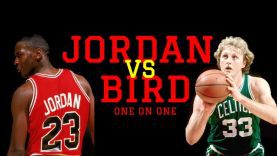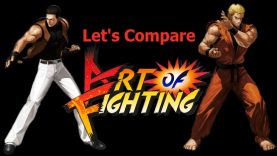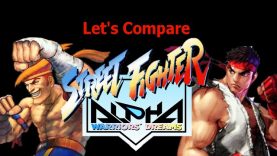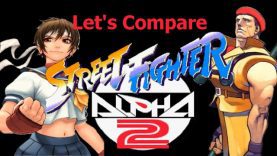Let’s Compare ( Street Fighter Alpha )
Gaming History Source
Video Locations:
1. Arcade 0:34
2. Gameboy Color 4:09
3. Windows ( Zero ) 7:38
4. Sega Saturn 11:07
5. Playstation 14:36
6. Playstation 2 18:06
( Street fighter Alpha Anthology )
Video Description:
http://en.wikipedia.org/wiki/Street_Fighter_Alpha
Street Fighter Alpha: Warriors’ Dreams, known as Street Fighter Zero (ストリートファイター ZERO?) in Japan, Asia, South America, and Australia, is a 1995 fighting game by Capcom originally released for the arcade for the CPS II hardware. It was the first all new Street Fighter game produced by Capcom since the release of Street Fighter II in 1991. The game introduces several new features, expanding on the Super Combo system previously featured in Super Street Fighter II Turbo, with graphics drawn in the same animated style Capcom employed in Darkstalkers and X-Men: Children of the Atom. The plot of Street Fighter Alpha is set after the original Street Fighter but before Street Fighter II and thus the game features younger versions of established characters, as well as characters from the original Street Fighter and Final Fight, and a few who are new to the series. The working title for the game was Street Fighter Legends.
Gameplay:
Street Fighter Alpha revamps the Super Combo system introduced in Super Street Fighter II Turbo by adding a three-level Super Combo gauge. Like in Super Turbo, the Super Combo gauge fills in as the player performs regular and special techniques. When the gauge reaches Level 1 or higher, the player can perform one of his or her character’s Super Combo techniques. The number of punch or kick buttons pressed simultaneously when performing a Super Combo determines the amount that will be used. In addition to Super Combos, the player can also perform a special counterattacking technique called an Alpha Counter (Zero Counter in the Japanese version) after blocking an opponent’s attack, which consumes a level of the Super Combo Gauge.
There are two playing styles that can be selected after choosing a character: “Normal” and “Auto”. Auto differs from Normal in which the character will automatically guard against a limited number of attacks from his or her opponent (provided the character is not in the middle of performing an attack). Auto also allows the player to perform an instant Super Combo by pressing a punch and kick of the same strength simultaneously, but at expense of reducing the maximum level of the Super Combo gauge to one.
There are also new basic techniques such as Air Blocking, the ability to guard during mid-air; and Chain Combos (also known as Alpha Combos, or Zero Combos in Japan), which are combos that are performed by interrupting the animation of one basic move by performing another of equal or greater strength. In addition to recovering from an opponent’s throw, the player also has the ability to roll on the ground when they fall to the ground after an attack.
The single player mode consists of seven random computer-controlled opponents and a final opponent whose identity depends on the storyline of the player’s selected character. M. Bison is the final boss for half of the characters. There are also two hidden characters: Akuma, who returns from Super Turbo as an alternate final boss only after certain in-game requirements are met, and a new character named Dan (a popular Capcom spoof character), who challenges the player during the course of the game if certain requirements are met.
The game also features a secret two-on-one Dramatic Battle mode in which two players as Ryu and Ken fight against a computer-controlled M. Bison, a match inspired by the final fight between the characters in Street Fighter II: The Animated Movie (the Japanese arcade version of the game plays an instrumental rendition of the movie’s battle theme, “Itoshisato Setsunasato Kokorozuyosato”, which was replaced by M. Bison ’s regular theme in the overseas releases).













